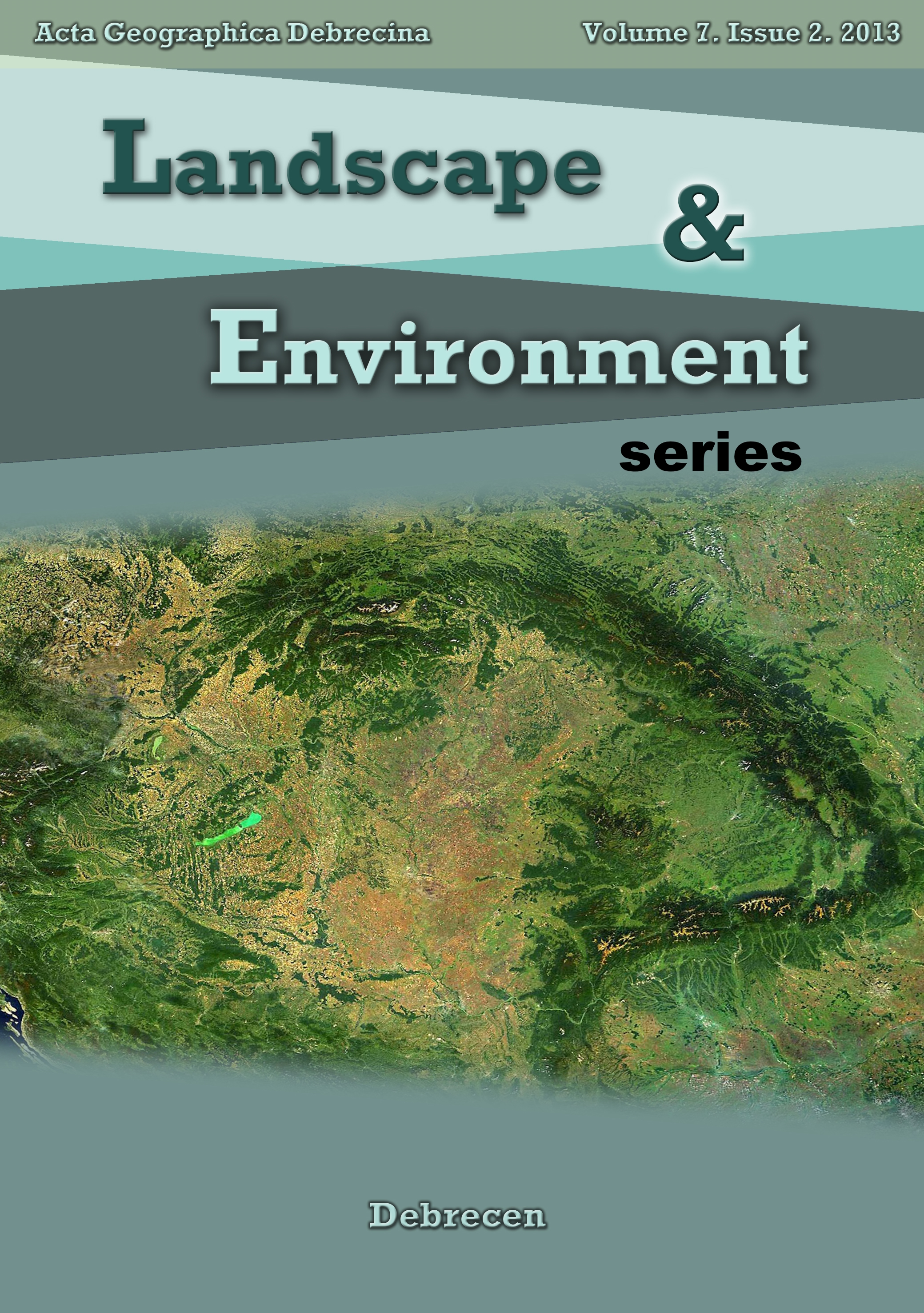Vol. 7 No. 2 (2013)
Szabó, G. - Mecser, N. - Karika, A. Assessing data quality of remotely-sensed DEM's in hungarian sample area
Oke, A. O. - Sangodoyin, A. - Ogedengbe, K. - Omodele, T. Mapping of river waterquality using inverse distance weighted interpolation in Ogun-Osun river basin, Nigeria
Paládi, M. Comparison of CO2-emissions of households heated by natural gas and firewood
Bottyán, Zs. In-flight icing characteristics of unmanned aerial vechicles during special atmospheric condition over the Carpathian-basin
##issue.tableOfContents##
Articles
-
Assessing data quality of remotely-sensed DEM's in hungarian sample area
42-47Views:110Nowadays the free-access digital elevation models are getting more and more popular. The SRTM and ASTER GDEM databases are the most widespread. However, there are numerous situations and weaknesses we have to take into account during their usage, such as direction-dependent accuracy and difference between digital and real surfaces. Our goal was to examine these kinds of deficiencies of surface models.
pdf75 -
Mapping of river waterquality using inverse distance weighted interpolation in Ogun-Osun river basin, Nigeria
48-62Views:965Sustainable management of water resources involves inventory, conservation, efficient utilization, and quality management. Although, activities relating to quantity assessment and management in terms of river discharge and water resources planning are given attention at the basin level, water quality assessment are still being done at specific locations of major concern. The use of Geographical Information System (GIS) based water quality information system and spatial analysis with Inverse Distance Weighted interpolation enabled the mapping of water quality indicators in Ogun and Ona catchment of Ogun-Osun River Basin, Nigeria. Using 27 established gauging stations as sampling locations, water quality indicators were monitored over 12 months covering full hydrological season. Maps of seasonal variations in 10 water quality indicators as impacted by land-use types were produced. This ensured that trends of specific water quality indicator and diffuse pollution characteristics across the basin were better presented with the variations shown along the river courses than the traditional line graphs. The production of water quality maps will improve monitoring, enforcement of standards and regulations towards better pollution management and control. This strategy holds great potential for real time monitoring of water quality in the basin with adequate instrumentation.
pdf1163 -
Comparison of CO2-emissions of households heated by natural gas and firewood
64-72Views:170In terms of climate protection, one of the most important questions is the reduction of the GHG emission. In this study, I compared CO2 -emission of households heated by natural gas and firewood, which had similar heated area and volume of air, considering the carbon-dioxide absorbing of forests of the households heated by firewood. Natural gas is a fossil fuel; however, the firewood (solid biomass) is a renewable energy resource. One of the main features of renewable energy sources is to get into the atmosphere less CO2 than fossil fuels. The renewable energy resources emit into the air just as much CO2 as they absorb during their life cycle.
pdf124 -
In-flight icing characteristics of unmanned aerial vechicles during special atmospheric condition over the Carpathian-basin
74-80Views:116The in-flight aerial icing phenomena is very important for the Unmanned Aerial Vehicles (UAV) because it causes some serious problems such as reduced lift and increased drag forces, significantly decreased angle of attack, increased weight, structural imbalances and improper radio communications. In order to increase flight safety of UAV’s we develop an integrated meteorological support system for the UAV pilots, mission controllers and decision makers, too. In our paper we show the in-flight structural icing estimation method as a part of this support system based on a simple 2D ice accretion model predictions. We point out the role of the ambient air temperature, cloud liquid water content, airfoil geometry and mainly the true airspeed in the icing process on the wings of UAVs. With the help of our model we made an estimation of geometry and amount of ice accretion on the wing of a short-range and a high-altitude and long-endurance UAVs during a hypothetical flight under a typical icy weather situation with St clouds over the Carpathian-basin (a cold-pool situation case study). Finally we point out that our icing estimation system can easily be adapted for supporting the missions of UAVs.
pdf79
